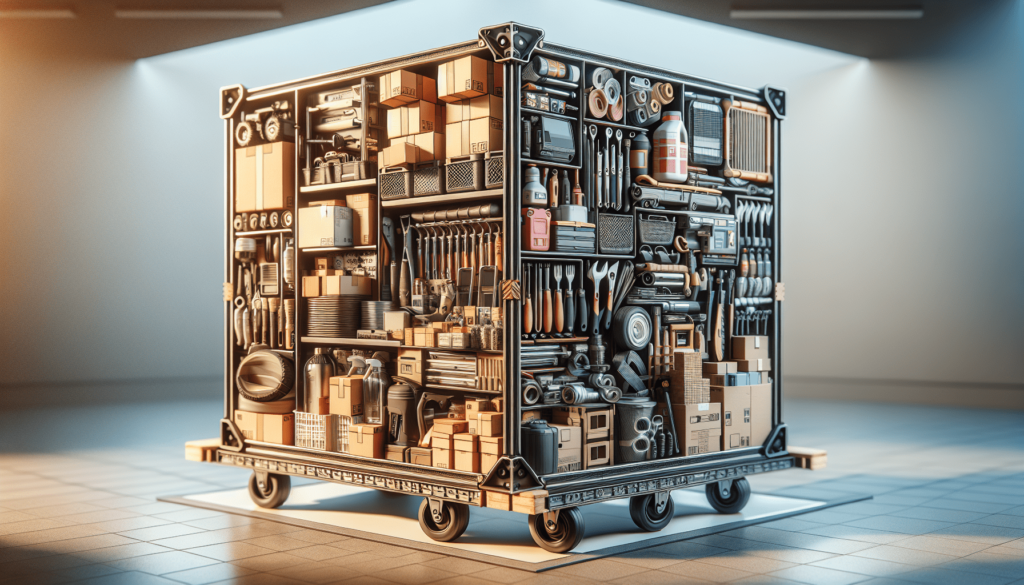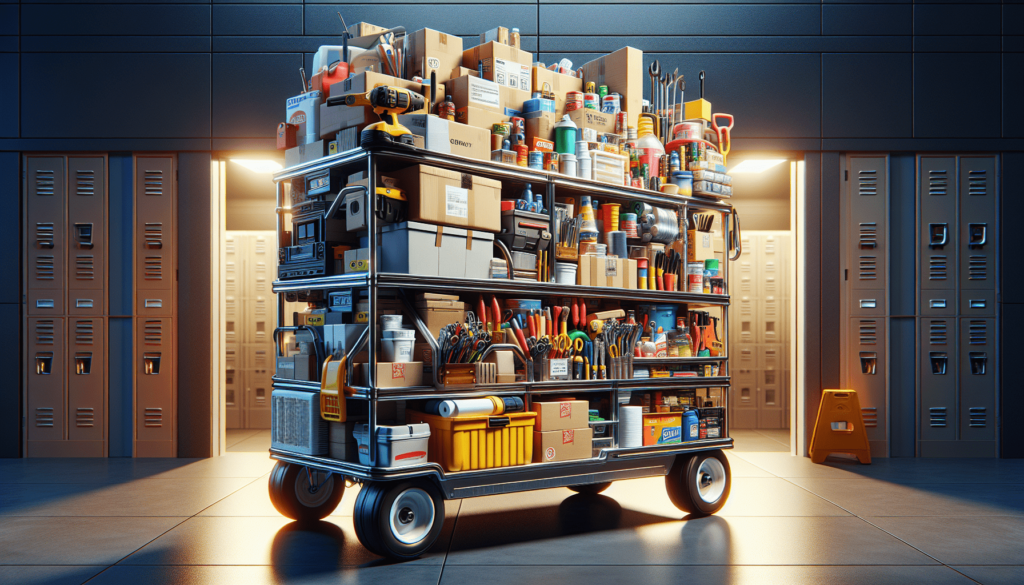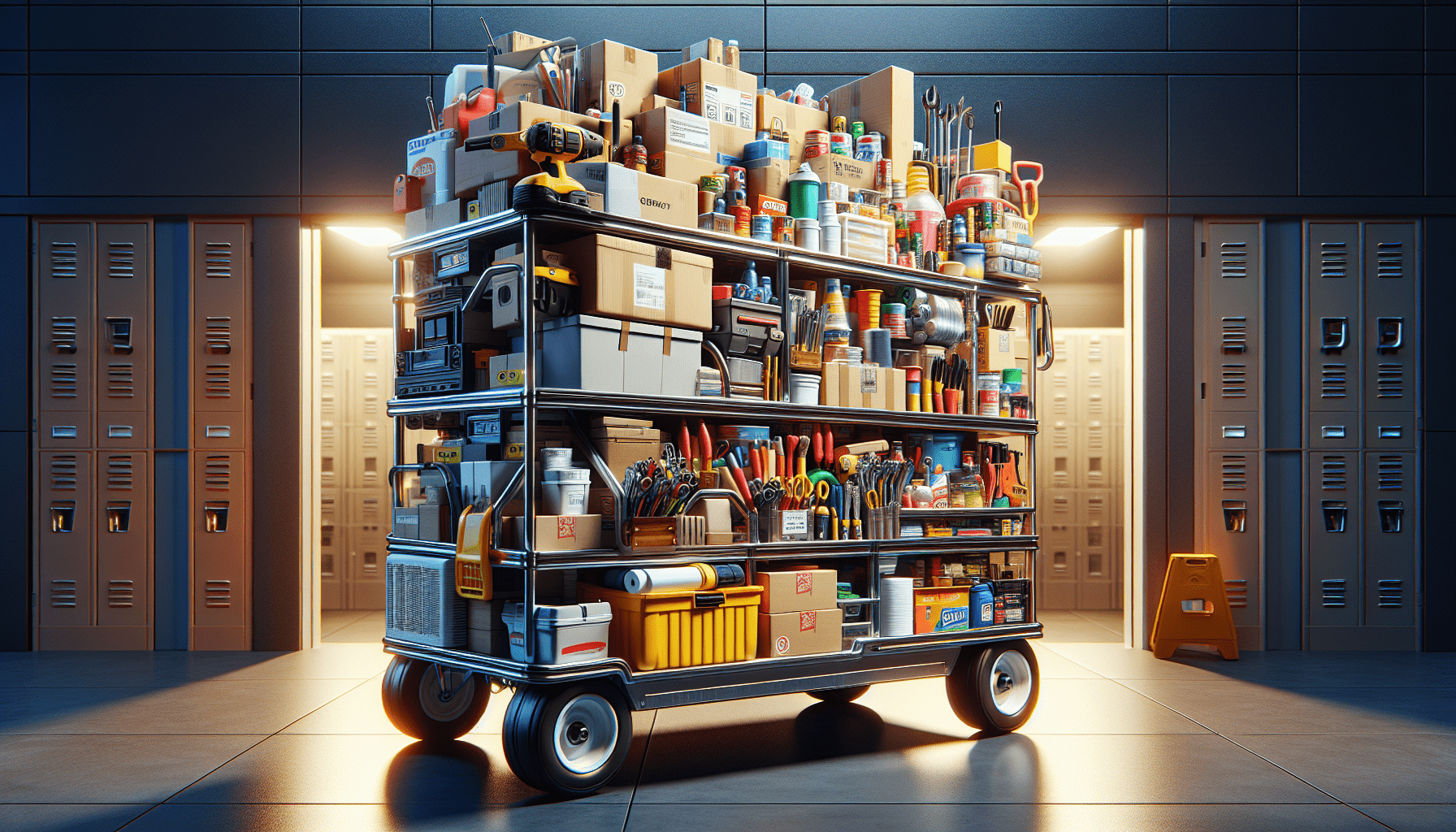Have you ever found yourself staring at a large capacity cart, unsure of how to efficiently pack everything you need? You’re not alone. The art of packing can sometimes feel overwhelming, especially when you’ve got a multitude of items to fit into one space. However, with a few clever strategies and techniques, you can transform your packing game and maximize every inch of space available to you.

Understanding Large Capacity Carts
Large capacity carts are designed to hold a significant amount of goods while providing easy transportation. Whether you’re using them for events, grocery shopping, or warehouse management, understanding their structure and features can significantly improve how effectively you pack them.
Types of Large Capacity Carts
Familiarizing yourself with the types of large capacity carts on the market will help you choose the right one for your needs. Here’s a quick overview:
| Type | Description | Ideal Use |
|---|---|---|
| Utility Carts | Open designs with shelves for easy access | General transportation |
| Shopping Carts | Often seen in retail, designed for customer use | Grocery shopping |
| Warehouse Carts | Heavy-duty models meant for transporting goods in bulk | Inventory management |
| Folding Carts | Compact design that can be stored away easily | Events and travel |
By knowing the characteristics of your cart, you can pack with the cart’s design in mind, optimizing how you utilize the space.
Planning Your Packing Strategy
Before you start loading everything into your cart, it’s essential to plan your packing for maximum efficiency. Consider what techniques will best suit your items.
Inventory Your Items
Start by listing all the items you intend to pack. This will help you visualize the space you need and identify must-haves versus items that may be unnecessary.
- Categorize Your Items: Break down your list into categories like essentials, non-essentials, and fragile items.
- Estimate Volume: Try to determine how much space each category will take so you can allocate room accordingly.
By organizing your items, you’re already one step ahead in the packing process.
Assess Weight and Fragility
When packing, consider the weight distribution and the fragility of items. Top-heavy or unevenly distributed loads can lead to tipping or damage. Here’s how to pack with this in mind:
- Heavier Items on the Bottom: Place heavier items like books or boxes at the base of your cart.
- Fragile Items in the Middle: Items that can break need protection—position them in the center, cushioned by softer, more substantial items.
- Lightweight Items on Top: Store lighter items like paper products or clothing on top to ensure they’re not crushed.
This strategy helps maintain stability and keeps your items safe during transport.

Smart Packing Techniques
Your method of packing will have a significant impact on how well you utilize the space in your cart. Let’s look closer at some effective techniques you can employ.
Layering and Stacking
Layering and stacking is one of the most efficient ways to use vertical space in a large capacity cart. It allows you to maximize height while maintaining order.
-
Layering: Stack smaller items within larger boxes to create layers. Use boxes and containers to group similar items together.
-
Stacking: When stacking, ensure that the weight distribution remains balanced. Avoid placing heavy items on top of lighter ones, as this can cause instability.
Containment Is Key
Utilizing containers can streamline your packing process and save space. Here’s how you can effectively use containers:
- Bins and Boxes: Use clear bins that allow you to see contents at a glance while keeping everything organized.
- Bags: Soft bags can conform to spaces better than rigid boxes. Use reusable shopping bags or duffle bags for clothing or soft items.
Containers not only help in keeping things orderly but can also be easily pulled out of the cart when needed.
Utilizing All Available Space
It’s essential to be mindful of every nook and cranny in your cart. You might be surprised at how much space can be made available with a little creativity.
Side Panels and Underneath
Don’t forget to check the sides and underneath your cart for additional storage options. Here are some suggestions:
- Use Side Pockets: If your cart has side pockets, utilize them for frequently accessed or lightweight items.
- Underneath Space: Consider placing flat, lightweight items underneath your packed goods. Just ensure they won’t be crushed by the weight above.
Top of the Cart
The top space of your cart should not be overlooked. For items that are frequently used or need to be easily reached, there are a few strategies to consider.
- Flat Items: Towels, blankets, or stacking bins with lighter contents can be placed on top without issues.
- Bungee Cords: When you have taller items that can’t be stacked too high, utilize bungee cords to secure them while keeping the structure stable.
Using Vertical Space
If your cart allows, consider using vertical space more effectively with these strategies:
- Vertical Dividers: Use vertical dividers like cardboard or plastic to create sections. This helps segregate items while providing support.
- Create Shelving: If possible, stack smaller carts or bins vertically within the larger cart to create additional “shelves.”
Maximizing vertical space can drastically increase your cart’s capacity.
Special Considerations
While packing may seem straightforward, there are certain considerations that can help enhance your packing effectiveness even more.
Weather Consideration
If you’re packing items for an outdoor outing or in uncertain weather, make sure to pack with conditions in mind. Here’s what to do:
- Waterproofing: Use waterproof bags for items that could be damaged by moisture.
- Cover Overhead: If expecting rain, consider using tarps or covers that can easily be thrown over your cart.
Preparation for weather will save you from potential headaches later on.
Time Efficiency
Being efficient in your packing can save time and reduce stress—consider these aspects:
- Pre-pack: If you know you will be using your cart frequently, try to pre-pack items. Create a system where essentials are easily accessible.
- Know Your Route: If you’re navigating through crowds, pack to ensure quick access to frequently used items.
Taking time efficiency into account can greatly enhance your experience.
Maintenance of Your Cart
Keeping your large capacity cart in top condition goes a long way in its performance and your packing efficiency.
Regular Inspection
Check your cart regularly. Look for any signs of wear and tear that could affect its load capacity.
- Wheels and Handles: Ensure wheels roll smoothly and handles are sturdy for ease of movement.
- Cleaning: Regularly clean out your cart to prevent the accumulation of debris that can take up space.
Maintaining the condition will save you time and effort in the long run.
Reassess Your Packing
After each use, take a moment to evaluate your packing strategy.
- Think About What Worked: Reflect on what items were easily accessible and which were harder to retrieve.
- Adapt for Next Time: Adjust your packing methods for future uses based on this feedback.
Continual improvement will enhance your future packing experiences.
Practical Examples of Efficient Packing
To give you an idea of how to execute these strategies, consider these packing scenarios where efficiency plays a significant role.
Scenario 1: Grocery Shopping
When loading up for a grocery haul with a large capacity cart, employ these packing tips:
- Place heavier items like canned goods or large bottles on the bottom.
- Pack moderately fragile items like bread or baked goods in the center, cushioned by lighter items on either side.
- Use reusable shopping bags to contain smaller items, securing them on top for easy access at checkout.
Scenario 2: Event Setup
If you’re preparing for an event, your packing might look like this:
- Start by listing all items needed for the event and categorize by type.
- Use bins for specific functions (e.g., decorations, kitchen supplies) and place them on the bottom.
- Keep frequently accessed items like utensils and napkins at the top, using bungee cords to secure tall items like banners.
Scenario 3: Warehouse Management
Managing inventory means efficiency is key:
- Stack boxes neatly, placing heavier goods on the bottom and lighter ones stacked higher.
- Use clear bins for smaller items so you can quickly locate them.
- Group similar products together to streamline the process of restocking.
These examples illustrate how effective packing can significantly change how you manage your items.
Conclusion: The Joy of Efficient Packing
Packing efficiently is not just about making everything fit; it’s about transforming your experience of moving items from one place to another. By employing thoughtful strategies, organization practices, and maintaining your cart, you stand to gain not only time and efficiency but also a sense of joy and control over your process.
With little adjustments to your approach and a focus on maximizing every inch of your large capacity cart, you’ll discover how easy it can be to pack like a pro. So next time you face the task of packing up your cart, remember these tips and watch as the process unfolds smoothly and enjoyably.

